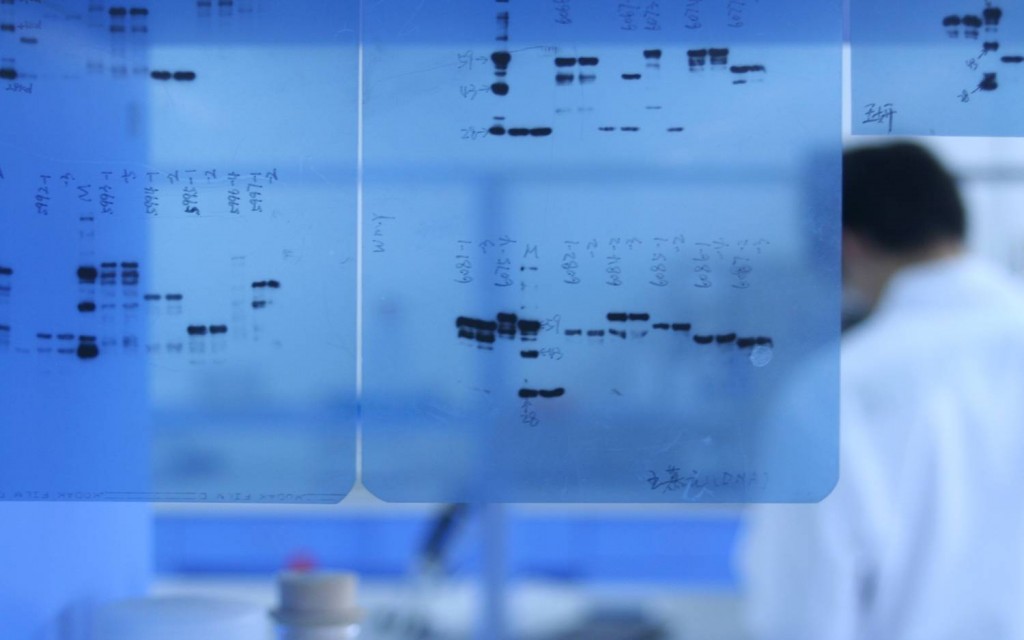7 Tips For Optimizing Your Western Blotting Experiments
How to optimize your western blot protocol
By Deborah Grainger
Western blotting is not an exact science: obtaining perfect, publication-ready results straight away is not exactly the norm. However, there are steps you can take to refine your blotting experiments and ensure they get off to the best start possible. This fine-tuning process is known as optimization, and several stages of the Western blotting protocol can be subjected to it.

1. SDS-PAGE
Your Western blotting experiments start long before you begin to work with your membrane. We could go as far back as sample preparation, but in the interest of space let’s start with sample separation. With this, you get out what you put in—without a good SDS-PAGE gel you will not get a good membrane, and it will all unravel from there. If you cast your own gels, take extra care to ensure uniformity in their makeup. Select the right acrylamide percentage (see Proteintech’s Western blot protocol [PDF]). Avoid that dye-front “smiling” effect by resisting the temptation to run your gels at high voltages and fill empty wells with an equivalent volume of 1x sample buffer.
Above all, load a uniform amount of protein; determine protein concentration by assay and be prepared to reduce your loading amount if you obtain “streaky” blots. The Proteintech validation lab finds that 30 μg of protein per lane usually gives streak-free and well-separated bands.
2. Membrane
Your membrane choice can make a huge difference to the outcome of your Western blotting experiments. The main two membrane types are PVDF and nitrocellulose, but there are now several versions of each on the consumables market, including, for instance, membranes optimized for fluorescence-based immunodetection or low-molecular-weight proteins.
PVDF is valued for its toughness, stability and resistance to most acids and alkalis (meaning it is the membrane of choice for those of you who wish to strip and re-probe your blots). PVDF membranes also offer better protein retention than nitrocellulose.
Nitrocellulose membranes are easily blocked and generally provide high signal-to-noise ratios. You won’t be able to strip and re-probe them, though, and also pay attention to nitrocellulose-membrane pore size.
Finally, a word about lab tradition: Don’t be afraid to change membrane types because of lab norms. Trying something different may be the key to the optimum Western blot.
3. Antibody concentration
Assuming you’ve put the required effort into selecting your antibody, your next step should be to determine the optimum working antibody concentration.
The rate of binding between antibody and antigen (the affinity constant) is affected by their relative concentrations in solution (among other variables, like temperature and pH). Antigen amounts are usually fixed in Western blotting (i.e. your protein is fixed to the membrane), so you will often need to tweak the antibody concentration to obtain better blots. Doing this in an organized manner—testing several dilutions of antibody while holding all other parameters constant—will help you determine the optimal antibody concentration for your experiments.
This step is called antibody titration, and it should be performed every time you use a new antibody or set of experimental conditions. It should also be done if you ever notice a new batch of polyclonal antibody is not performing the same as the last one.
How to titer an antibody
Many companies provide recommended dilutions on their antibody data sheets, and these are usually good ballpark figures to get you started; however, it is still advisable to titer antibodies, as the conditions used to obtain those recommended dilutions may be very different from the ones you’re using. If a product data sheet suggests using a dilution of 1:1000, try a series of 1:250, 1:500, 1:1000, 1:2000 and 1:4000.
In general, if you bracket the recommended dilution with a doubling and a halving of it (and one dilution in between each of these) you should be on the right track. If there’s no recommended dilution to start you off, try 1 μg/ml of purified antibody as your starting point (concentrations should be on the datasheet) and go from there. Remember to keep all other protocol parameters the same, such as sample type, incubation times, wash times and temperatures.
A note on secondary antibodies
It may be that you have to try different concentrations of secondary antibodies too—especially in the case of chemiluminescent detection. The concentration of the HRP-labeled secondary antibody directly affects the appearance of the bands. Too little HRP enzyme will result in low chemiluminescent signal and light or missing bands. On the other hand, a concentration that is too high will produce “burnt-out” bands. This is caused by a rapid depletion of substrate at the center of the bands. The length of chemiluminescent-reagent incubation also will make a difference (see #6, Detection, below).
4. Blocking conditions
Various blocking buffers are available and not all of them work in every situation. It is important to try several blocking buffers for each antibody-antigen pair. Remember that milk-based blocking buffers contain such things as endogenous biotin, glycoproteins and enzymes that may interfere with signal. Milk-based buffers, for example, contain active phosphatases that will sabotage your detection of phosphorylated proteins; in these cases, try alternatives such as bovine serum albumin-based blockers.
5. Washing
For the most part, whenever I’ve had high background signal, revising the washing steps on the next run-through has proven useful. Usually, I’ve done this by increasing the Tween-20 concentration from 0.05% to 0.1%. You also can alter the intensity of washing by using any of the following tactics: Increasing washing times and volumes, performing additional buffer changes or using stronger detergents (e.g., SDS instead of Tween 20). Just don’t overdo it.
6. Detection
The detection stage is integral to obtaining a good Western blot signal. There are many chemiluminescent reagents out there—and chemiluminescent alternatives, such as fluorescent detection—so there are plenty of options if your current detection method isn’t meeting lab standards. You can choose reagents with more sensitivity or those that produce longer-lasting signal, for example. The latter choice will increase the reproducibility of your blots immeasurably.
At a simpler level, chemiluminescent detection can be optimized with film-exposure times. This is probably the optimization step performed most frequently, as it is quick and easy. Always expose your blots for a range of individual time points (but remember that after about 10 to 15 minutes, all the HRP substrate will be used up). Your film choice will make a difference, too. I’ve always found films designed specifically for chemiluminescent detection—rather than any standard radiosensitive film—to be the optimum choice.
7. Cut out a step!
It makes sense that if you have fewer steps to carry out, there’s less that can go wrong with your experiment and there’s fewer steps to optimize in the first place. Technological advances and simple reagent modifications, such as fluorescence-imaging and HRP-conjugated reagents, respectively, can help here.
Though fluorescence-imaging systems may not yet be available to every individual lab, there may be core or central facilities at your institution that offer this technology. An immediate advantage of fluorescence-based detection systems is they enable detection of more than one antibody simultaneously, eliminating the need to strip and re-probe your blots. (We thoroughly recommend, however, that you don’t perform your initial attempts at Western blot using multiple primary antibodies in the same incubation — especially if fluorescence imaging is unavailable and you’re opting to use chemiluminescence detection. If you want to do this eventually, leave it till you know your proteins and antibodies a lot better.)
Alternatively, you can skip secondary detection of primary antibodies altogether, and streamline your Western blotting protocol, using HRP-conjugated primary antibodies. Admittedly these are not available for every protein target; however, those recognizing common loading controls and protein tags could save you a lot of time and could be a good investment. Proteintech has several of these!
In summary
The main aims of optimization are to increase the signal-to-noise ratio of specific bands and decrease nonspecific bands (if present). Admittedly, if you choose to optimize all the variables above, it will take you considerable time; however, even one or two alterations may make a difference and actually save you time in the long run. On the whole, I consider optimization an extremely worthwhile undertaking—and a necessary strategy if you want to achieve publication-quality Western blots.
Related products
| Name | Conjugation | Catalog no. | Type | Application |
| Alpha-tubulin antibody | HRP | HRP-66031 | mAb | ELISA, WB |
| Beta-actin antibody | HRP | HRP-60008 | mAb | ELISA, WB |
| GAPDH antibody | HRP | HRP-60004 | mAb | ELISA, WB |
| GFP-tag antibody | HRP | HRP-66002 | mAb | ELISA, WB |
| GST-tag antibody | HRP | HRP-66001 | mAb | ELISA, WB |
| 6*His-tag antibody | HRP | HRP-66005 | mAb | ELISA, WB |



